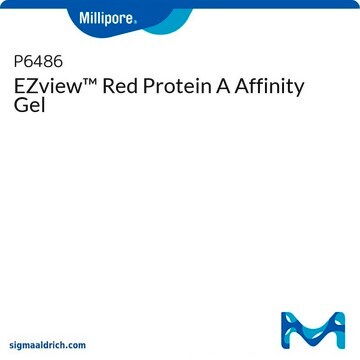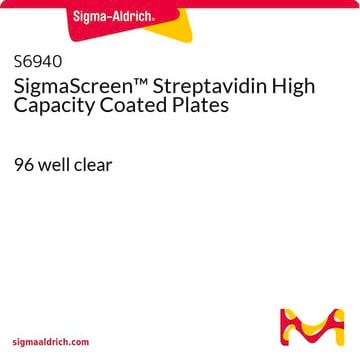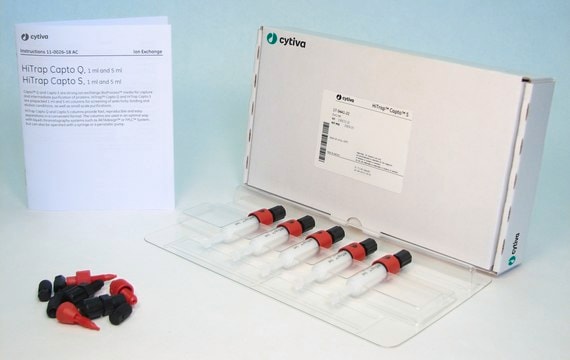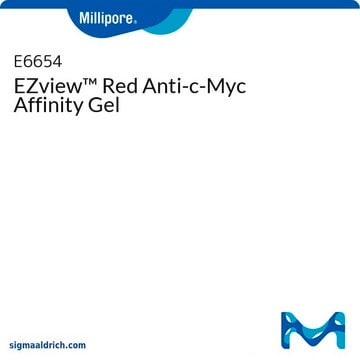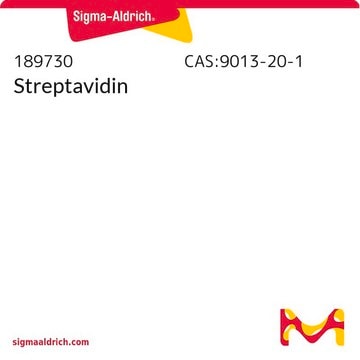E5529
EZview™ Red Streptavidin Affinity Gel
About This Item
Productos recomendados
form
suspension
shelf life
1 yr
technique(s)
western blot: suitable
matrix
4% agarose
pH
7.2
capacity
~10 μg(biotin per ml of packed gel)
shipped in
wet ice
storage temp.
2-8°C
General description
cyanogen bromide-activated 4% agarose beads. It is designed to capture (pull-down) the biotinylated target molecules, such as proteins, peptides, antibodies, nucleic acids, lectins, receptors and ligands.
Application
Features and Benefits
- Increased visibility - Red color reduces risk of incidental aspiration
- Improved recovery of target protein by reduced accidental loss
- Higher reproducibility - More consistent yields
Physical form
Legal Information
Storage Class
10 - Combustible liquids
flash_point_f
Not applicable
flash_point_c
Not applicable
Certificados de análisis (COA)
Busque Certificados de análisis (COA) introduciendo el número de lote del producto. Los números de lote se encuentran en la etiqueta del producto después de las palabras «Lot» o «Batch»
¿Ya tiene este producto?
Encuentre la documentación para los productos que ha comprado recientemente en la Biblioteca de documentos.
Los clientes también vieron
Contenido relacionado
Análisis, reactivos y protocolos de precipitación pull-down para investigar las interacciones interproteicas in vitro utilizando métodos de atenuación de precipitación por afinidad o GST, purificación por afinidad en tándem (TAP) y coinmunoprecipitación.
Análisis, reactivos y protocolos de precipitación pull-down para investigar las interacciones interproteicas in vitro utilizando métodos de atenuación de precipitación por afinidad o GST, purificación por afinidad en tándem (TAP) y coinmunoprecipitación.
Análisis, reactivos y protocolos de precipitación pull-down para investigar las interacciones interproteicas in vitro utilizando métodos de atenuación de precipitación por afinidad o GST, purificación por afinidad en tándem (TAP) y coinmunoprecipitación.
Investigate in vitro protein-protein interactions with pull-down assays, utilizing affinity, GST pull-down, TAP, and co-immunoprecipitation methods.
Nuestro equipo de científicos tiene experiencia en todas las áreas de investigación: Ciencias de la vida, Ciencia de los materiales, Síntesis química, Cromatografía, Analítica y muchas otras.
Póngase en contacto con el Servicio técnico

